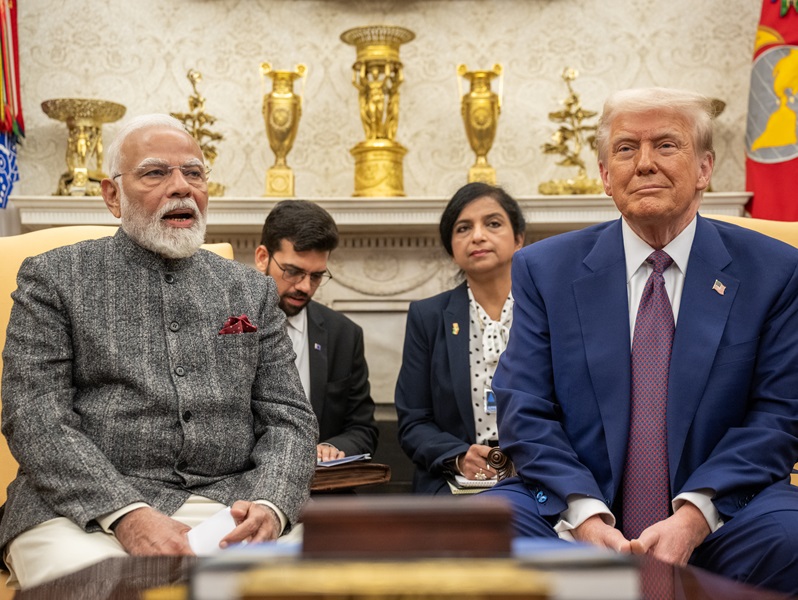.png)
Parliament Must Confront Security Lapses — Then Tackle Jobs Crisis
Operation Sindoor deserves scrutiny, but once the debate concludes, Parliament must address the rising unemployment and demand a credible jobs strategy.


Groupthink is the House View of BasisPoint’s in-house columnists.
July 29, 2025 at 3:54 AM IST
Operation Sindoor, India’s retaliatory strike after the Pahalgam terror attack, will rightly dominate parliamentary proceedings this week. It will allow elected representatives to do what they rarely manage — substantively engage with national security issues. The debate should honour the courage of the armed forces and reaffirm support for their modernisation drive. It must also pose difficult questions about how such a breach occurred, what intelligence gaps allowed it, and whether existing oversight structures are adequate to address the threats India faces.
Pride and accountability must coexist in this discussion. Democratic forums are strengthened, not weakened, when security decisions are examined with rigour rather than treated as mere ceremonial displays of unanimity.
The Sindoor strikes may have restored deterrence in the short term, but only an honest assessment of the failures leading up to the attack can prevent a repeat. That requires Parliament to press for clarity on threat assessments, institutional coordination and investment priorities for defence preparedness.
The “Other Security”
Once Parliament concludes its special focus on Sindoor, it must turn to another crisis that has been brewing quietly for months — rising unemployment and loss of income security.
The shock announcement by Tata Consultancy Services that it will cut 12,000 jobs, the largest retrenchment in its history, signals that white-collar employment in India is no longer insulated from global turbulence.
TCS has explained the cuts as stemming from skill mismatches and a shift to new operating models, rather than automation or “AI-driven efficiency gains” alone. That nuance is important but it does little to ease the anxiety of a middle class that has long seen the technology sector as its surest path to upward mobility – economic and social.
When the industry leader reduces its workforce by 2%, it is unlikely to be an isolated move. Other firms facing similar headwinds could follow, formalising a trend that has been visible in muted hiring, project delays and shrinking bench strength.
The timing of these layoffs is particularly troubling. Global demand for technology services is subdued, trade frictions are mounting, and domestic growth is softer than headline figures suggest.
These conditions combine to challenge India’s aspiration to sustain high growth rates while generating the millions of jobs needed each year. According to the government’s latest Periodic Labour Force Survey, youth (those aged 15-29) unemployment rose to 13.8% in rural areas and 18.8% in urban areas in June. These are broader employment numbers that somewhat mask a deeper unemployment crisis among educated youth, especially with respect to white-collar jobs.
The risk is that layoffs at marquee firms such as TCS spill over into consumption patterns and trigger secondary effects on allied industries, from real estate to automobiles, and retail.
Comprehensive Response
Policymakers have so far relied on a patchwork of initiatives — production-linked incentives, digital skilling programmes, start-up support, and employment-linked incentives — to address labour market gaps. These measures are useful, but inadequate to confront a structural shift in labour markets. A coherent strategy is needed, one that anticipates technological disruption, supports retraining, and aligns industrial policy with realistic job creation goals.
Such a strategy would require Parliament to do more than lament job losses. It should demand data transparency, sector-wise assessments and targeted fiscal interventions where necessary.
Could incentives be recalibrated to encourage retention rather than only expansion? Should public investment pivot toward sunrise sectors like green energy or defence manufacturing with explicit employment objectives? These are questions best aired in the legislature, where competing priorities can be weighed openly.
It has been more than a year since the finance minister announced an employment-linked incentive programme in her budget speech for 2024-25. With the Cabinet clearing the scheme only earlier this month, it is yet to take off, notwithstanding the fanfare surrounding it at the time. The Parliament may deserve an update.
The first step is recognising the problem. Parliamentary debate can puncture the complacency fostered by aggregate growth numbers and force recognition that certain segments of the workforce face acute stress. Addressing this openly is not a sign of weakness but of maturity — and may help pre-empt social discontent.
Operation Sindoor was also about adopting technology on a war footing. It's time to adopt a wartime mindset toward employability and job creation. National strength is measured not only on the battlefield but in the resilience of its workforce. By confronting both, Parliament can demonstrate the range and responsibility expected of it in a moment of multiple crises.



